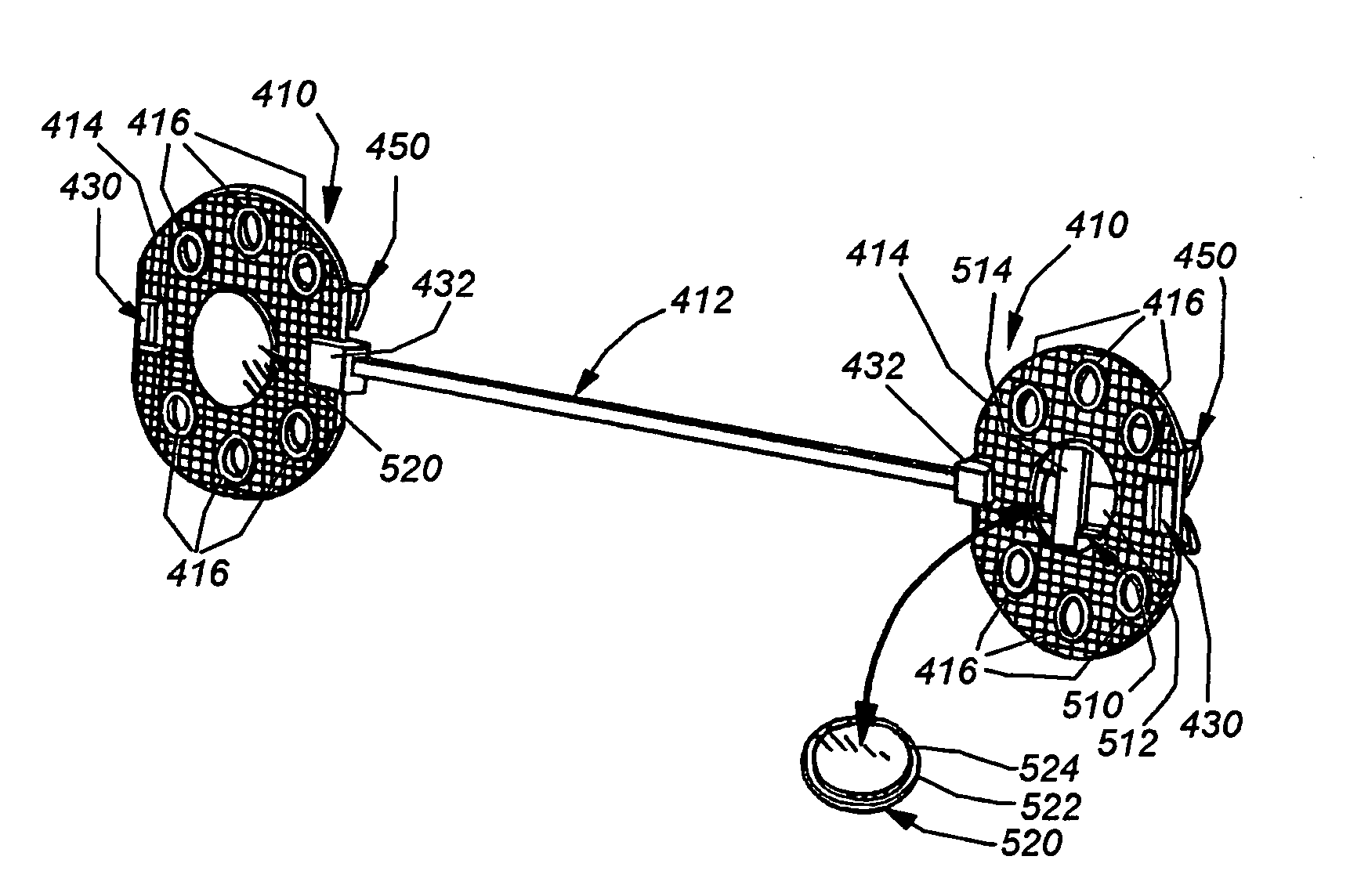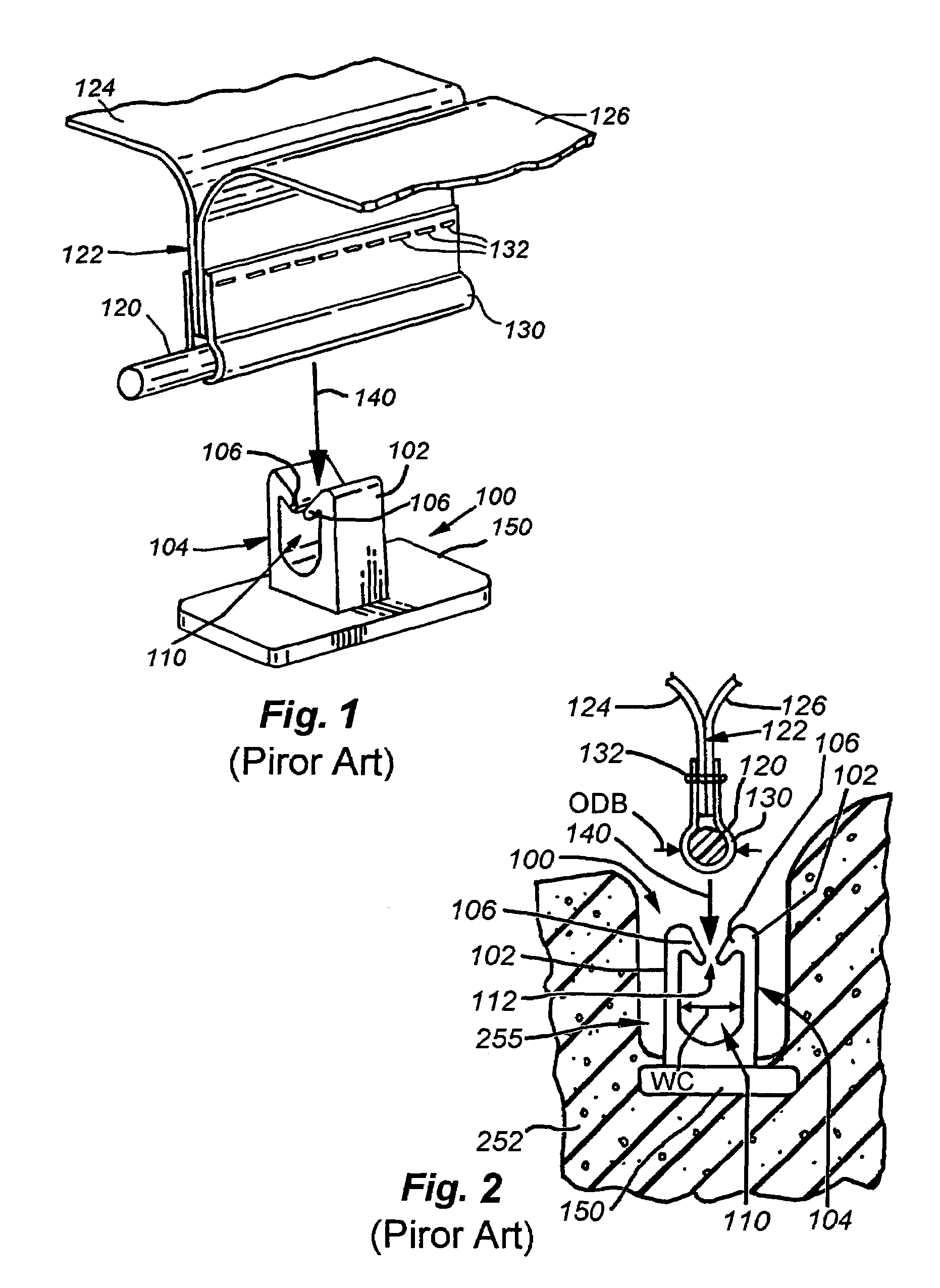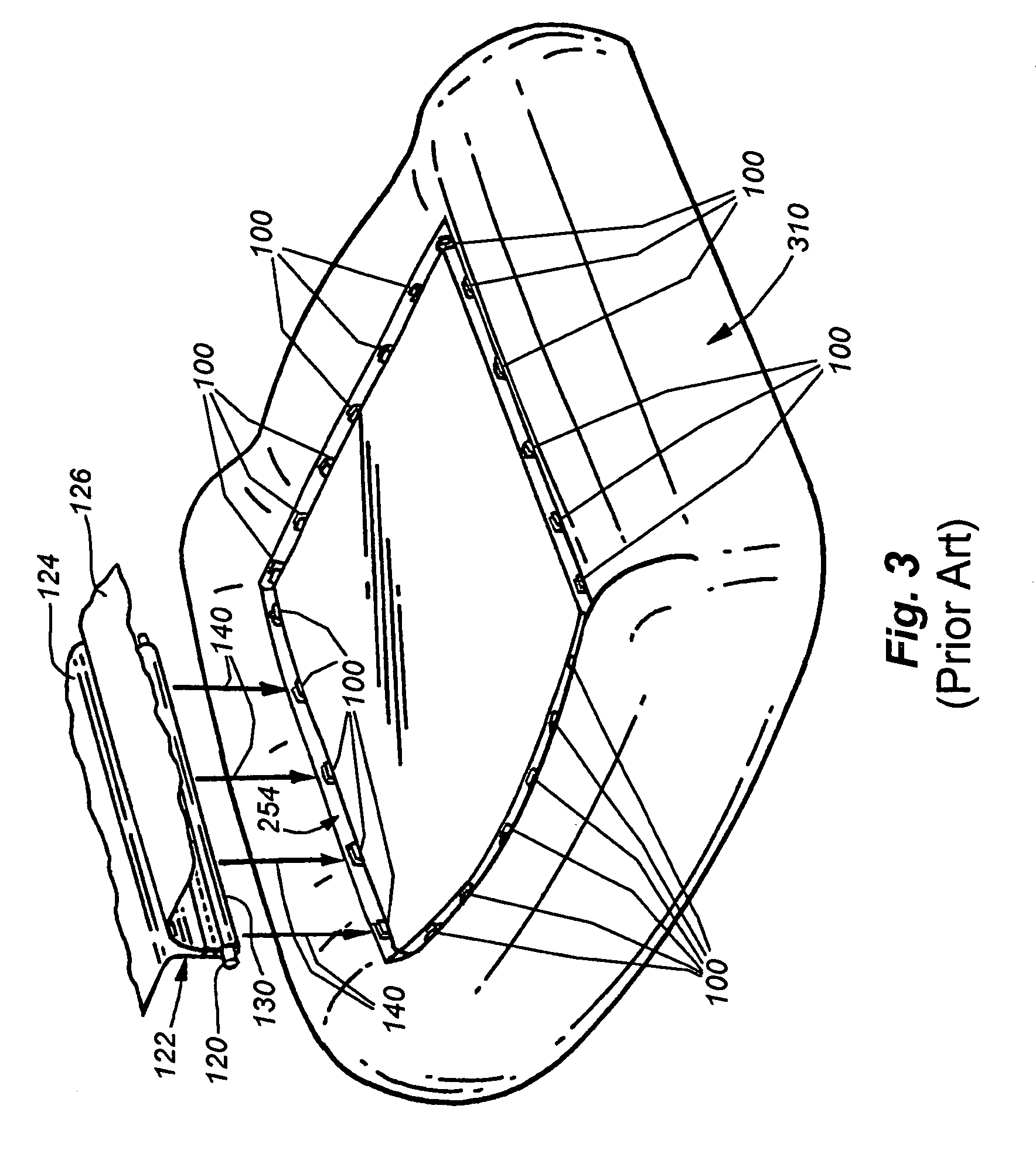System for attaching trim covers to a flexible substrate
a flexible substrate and trim cover technology, applied in the direction of snap fasteners, buckles, transportation and packaging, etc., can solve the problems of requiring significant skill to create, material will tend to billow or “tents”, and the permanent joint is difficult to repair, so as to prevent excessive flexure of the clip projection legs, prevent single point stress from forming in the legs, and prevent plastically deforming flexur
- Summary
- Abstract
- Description
- Claims
- Application Information
AI Technical Summary
Benefits of technology
Problems solved by technology
Method used
Image
Examples
Embodiment Construction
[0037]FIG. 4 details a pair of “chained” or “ganged” clips according to an embodiment of this invention. Each of the clips 410 is an independent unit connected to a flexible, elongated connector 412 that will be described in detail below. In general, clips 410 may be connected in any number using connectors of varying size to create and appropriately spaced chain of connectors for application to a molded resilient substrate (such as an automotive seat bottom or back). Each clip 410 includes a thin-cross-section, enlarged-surface-area base) also termed a “top) 414 that is design to seat within the substrate when hardened. The base is formed from a polymer material that may be particularly suited to provide good adhesion and chemical reaction bonding to the substrate material (typically polyurethane or isocyanate-based foam). Acceptable polymer materials for the base include, but are not limited to, nylon, polyester or any other thermoplastic that has the capability of surviving tempe...
PUM
| Property | Measurement | Unit |
|---|---|---|
| diameter | aaaaa | aaaaa |
| thickness | aaaaa | aaaaa |
| diameter | aaaaa | aaaaa |
Abstract
Description
Claims
Application Information
 Login to View More
Login to View More - R&D
- Intellectual Property
- Life Sciences
- Materials
- Tech Scout
- Unparalleled Data Quality
- Higher Quality Content
- 60% Fewer Hallucinations
Browse by: Latest US Patents, China's latest patents, Technical Efficacy Thesaurus, Application Domain, Technology Topic, Popular Technical Reports.
© 2025 PatSnap. All rights reserved.Legal|Privacy policy|Modern Slavery Act Transparency Statement|Sitemap|About US| Contact US: help@patsnap.com



